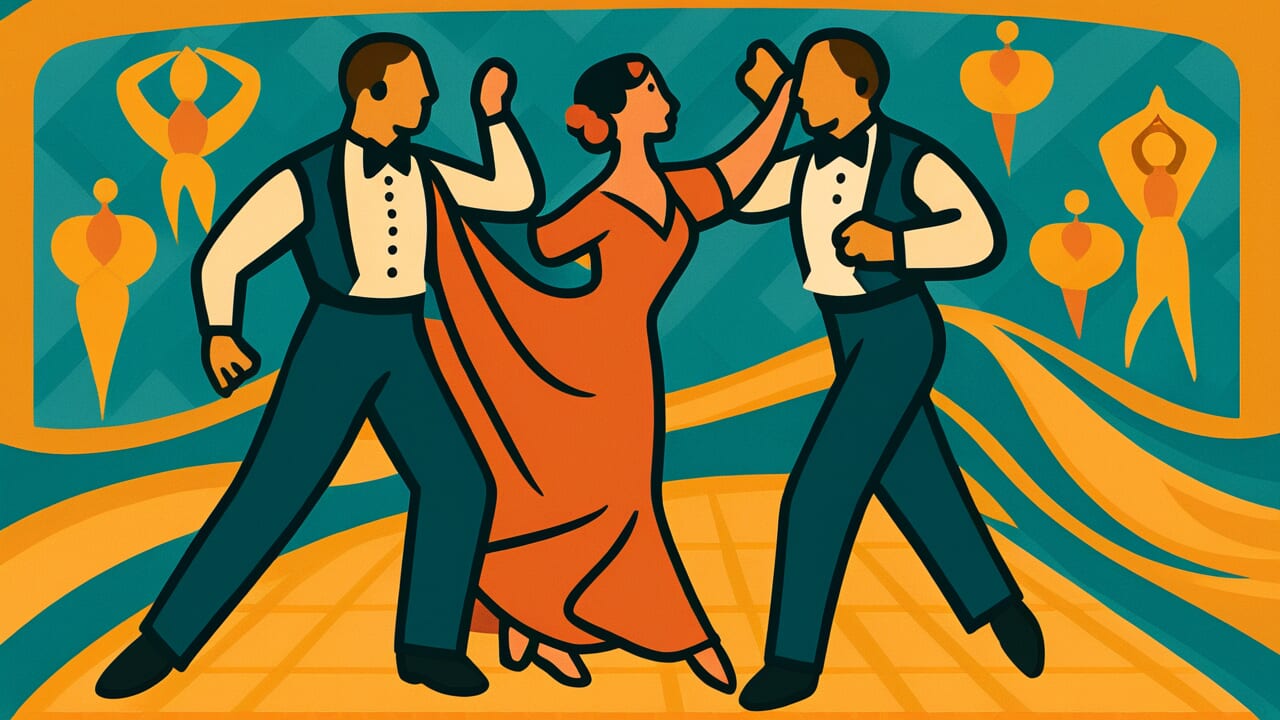How to Read “it takes two to tango”
It takes two to tango
[it TAYKS too to TANG-go]
The word “tango” rhymes with “mango.”
Meaning of “it takes two to tango”
Simply put, this proverb means that some situations require both people to participate equally for anything to happen.
The saying comes from ballroom dancing. In tango dancing, both partners must move together. One person cannot tango alone. If only one person tries to dance, it looks awkward and fails. Both dancers need to cooperate and follow the rhythm together.
We use this phrase when talking about arguments, relationships, or any situation involving two people. When friends fight, both people usually do something wrong. When a business deal works out, both sides must agree. When two people fall in love, both must have feelings for each other.
The proverb reminds us that blame and credit often belong to both sides. It is easy to point fingers at one person. But most human interactions need cooperation from everyone involved. This wisdom helps us think more fairly about conflicts and successes.
Origin and Etymology
The exact origin connects to the Argentine tango dance that became popular in the early 1900s. The dance required intense cooperation between partners. Both dancers had to move as one unit, making it impossible for just one person to perform.
The phrase first appeared in American English during the mid-1900s. As tango dancing spread to ballrooms worldwide, people noticed how the dance perfectly showed mutual cooperation. The saying grew from this obvious truth about the dance form.
By the 1950s, people used the expression beyond dancing. It became common in discussions about relationships, politics, and business. The phrase spread because it captured an important truth in memorable words. Today, most people know the saying even if they have never seen tango dancing.
Interesting Facts
The word “tango” may come from African languages brought to Argentina by enslaved people. Some linguists believe it relates to the word “tangó,” meaning a gathering place for dancing.
Tango dancing actually started in the poor neighborhoods of Buenos Aires in the late 1800s. The dance was considered scandalous because partners held each other so closely.
The phrase uses perfect rhythm and rhyme, making it easy to remember. “Takes two to tango” has a musical quality that matches its dancing origins.
Usage Examples
- Manager to HR representative: “He’s blaming his coworker for their project failure, but it takes two to tango.”
- Friend to friend: “She says her boyfriend is the only problem in their relationship, but it takes two to tango.”
Universal Wisdom
This proverb reveals a fundamental truth about human interdependence that our ancestors understood deeply. Most meaningful human experiences require genuine participation from multiple people. We cannot force authentic connection, cooperation, or conflict resolution on our own.
The wisdom addresses our tendency to oversimplify complex social situations. When relationships fail or succeed, we often want to assign complete responsibility to one person. This makes us feel more in control of outcomes. But reality shows us that most human dynamics emerge from the interaction between people, not from individual actions alone. Our ancestors observed this pattern repeatedly in their communities and captured it in this memorable phrase.
The saying also reflects the delicate balance between individual agency and collective responsibility. We each have power to influence situations, but that power has limits. We cannot make someone love us, force a friendship to work, or single-handedly resolve a conflict. This creates both humility and empowerment. We must take responsibility for our part while accepting that outcomes depend on others too. This balance between personal accountability and realistic expectations represents mature wisdom about how human relationships actually function across all cultures and time periods.
When AI Hears This
People consistently blame one person when relationships go wrong. They point fingers at the “difficult” partner or boss. But this misses something crucial about how conflict actually works. Most relationship problems need both people to keep them alive. One person alone cannot create lasting drama or ongoing tension.
This blame pattern happens because humans prefer simple explanations. Saying “they’re the problem” feels clearer than admitting mutual responsibility. People also believe they can fix things by themselves. This creates endless frustration when their solo efforts fail repeatedly. The mind resists seeing how we help create what we complain about.
What fascinates me is how this blind spot actually protects people. Seeing your role in every conflict would be emotionally overwhelming. The brain shields you from constant self-criticism by focusing outward. This allows humans to keep trying and maintain hope. Sometimes the “mistake” of oversimplified thinking serves a deeper wisdom about psychological survival.
Lessons for Today
Understanding this wisdom starts with recognizing our own role in difficult situations. When conflicts arise, the natural response is to focus on what the other person did wrong. This proverb suggests looking inward first. What did we contribute to this problem? How did our actions or words help create this situation? This self-reflection does not mean taking all the blame, but rather accepting our part honestly.
In relationships, this wisdom helps us avoid the trap of trying to change people. We cannot force someone to be a better friend, partner, or colleague through our efforts alone. Instead, we can focus on being the kind of person others want to cooperate with. We can communicate clearly, listen carefully, and show up consistently. But we must also recognize when the other person is not participating equally and adjust our expectations accordingly.
The hardest part of living this wisdom is accepting what we cannot control. We want to believe that good intentions and hard work can fix any relationship or situation. Sometimes they can, but only when both sides participate. Learning to recognize one-sided efforts saves us from frustration and wasted energy. This awareness helps us invest our time and emotional energy in relationships where mutual participation exists, creating more satisfying connections and more realistic expectations about human cooperation.



Comments